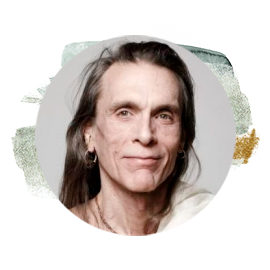What is real, and what is true? Ken Wilber writes in his insightful little book titled Trump and a Post-Truth World: “If there is one line that summarizes the message of virtually all of the truly prominent postmodern writers, it is that “there is no truth.” Truth, rather was a social construction, and what anybody actually called “truth” was simply what some culture somewhere had managed to convince its members was truth: but there was no actually existing, given, real thing called ‘truth.’” The result of this viewpoint, and the state of the world that we find ourselves living in today is one where “there is no universal moral framework – what’s true for you is true for you, and what’s true for me is true for me – and neither of those claims can be challenged on any grounds that do not amount to oppression…They most definitely and strongly believed that it is universally true that there is no universal truth…and left nothing but nihilism and narcissism for motivating forces.”
Wilber, who can be my guru any good day, suggests an antidote for this situation with two interesting ideas: one, that we are all familiar with, is adapting a modus operandi of loving kindness; the second comes from close observation of nature and natural systems. He suggests that rather than rejecting all hierarchies as oppressive and bad systems, that we differentiate between what he calls “dominator hierarchies and growth hierarchies.” Growth hierarchies are not exclusive and domineering, they are inclusive and integrating while dominator hierarchies oppress and dominate. But the point he makes is that not all hierarchies are bad and need to be overthrown. Indeed in nature, hierarchies are the basis for growth and development as they “transcend and include or differentiate and integrate.” “Thus, a single-cell zygote first splits into 2 cells, then 4, then 8, then 16, then 32 (and so on) differentiated cells, and after those are introduced, they are integrated into inclusive systems – a nervous system, a muscular system, a digestive system, and so on – all of which are integrated in the overall organism. Each stage of the growth process goes beyond (or transcends) the previous stage but also includes or enfolds it, and it does so by differentiating and integrating it.”
In the postmodern yoga world we can find ourselves in an ego competition, struggling to appear novel, and in that struggle rejecting everything that came before as hierarchical and oppressive. The yoga tradition has fallen under a lot of criticism during these times for being structured as a dominating hierarchy with gurus and teachers controlling and abusing students. The parampara, or lineage of teachers and teachings is a growth hierarchy and for our future growth and development we need to differentiate and integrate those teachings and teachers. Rather than reject our past we need to enfold it into a larger organism. When students refuse to become part of the whole then growth is not possible—imagine an atom refusing to become part of a molecule.
What we are doing now determines what happens next. Sometimes we loose sight of where we have been, where we are now, and where it leads us. When we reflect on the amazing contribution that the Jivamukti Yoga Tribe has made to the world – and the bright future that it promises, it gives us hope and energy. Here is a short list: we made veganism and animal rights the important discussion in yoga class; we made it hip to be devoted to God; we married yoga class with music, poetry, and art; we created the first world-class standard of training; we made bhakti, meditation, and the study of scripture and Sanskrit essential; we created ahimsa food, products, books, and videos to fund world changing programs; we empowered activists who express concern for better environment, better government, and better living in the natural world. Actually, my list is even longer, but maybe you need to add to it (own it) yourself. As we strive to represent the growing tip of human presence on the Earth evolving into a new, more compassionate presence, we can begin to enfold our novel contributions into a new paradigm, new nervous system, a new organism, a new tribe.

